When planning a Docusign migration, the biggest concern is often what happens to your existing library of templates. Rebuilding every agreement from scratch is time-consuming, error-prone, and disruptive to established workflows.
The good news? Moving your templates to Signeasy is simple — and you don’t have to start over. There’s no limit on the number of templates that can be migrated, so your entire library can move with you.
In this guide, you'll learn how to:
- Export templates from Docusign and prepare them for Signeasy migration
- Identify which fields migrate successfully and which aren’t supported
- Understand the key benefits of migrating templates
Before you start, here’s why making the switch makes sense.
Why migrate from Docusign to Signeasy?
Most teams switch from Docusign to Signeasy because docusign feels heavy and costly for their needs. It packs in enterprise-grade features that fast-growing businesses rarely use — yet still pay for.
On top of that, the hidden fees add up fast. Signeasy offers a cleaner, more affordable alternative that makes managing templates and users simple again, with an intuitive interface and tools built for quick setup and signing.
Estimate your savings with our ROI calculator
1. Business drivers
Teams choose Signeasy because it just works, without the hassle. You can set up and send documents in minutes, not hours, and your team doesn’t need extensive training to get started.
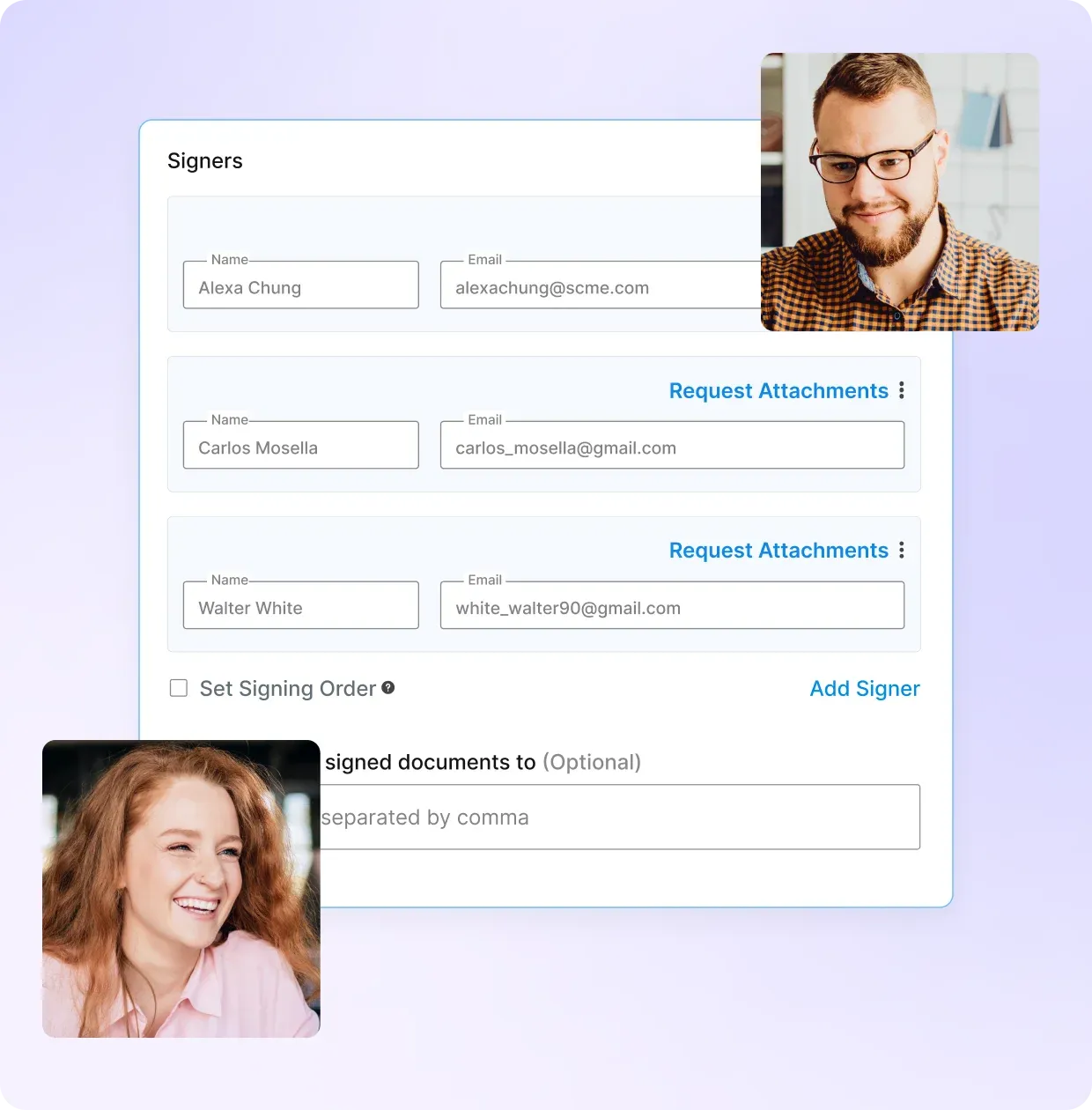
The mobile-first signing experience works seamlessly across phones and tablets. Your clients and partners can sign documents from anywhere, which naturally speeds up the deal cycles.
Plus, many organizations also find they can cut licensing costs significantly while making life easier for admins who manage users across multiple departments.
2. Technical drivers
Template management in Signeasy feels natural and well-organized from day one. Creating, editing, and sharing templates takes just a few clicks. You'll actually be able to find what you're looking for without getting lost in endless menus or advanced settings.
The platform connects effortlessly with the tools your team already uses, including Google Workspace, Outlook, and HubSpot. This keeps document workflows within familiar environments.
For more sophisticated automation needs, Signeasy's API gives you the flexibility you need. Build custom integrations that handle sending, tracking, and managing templates across your entire tech stack.
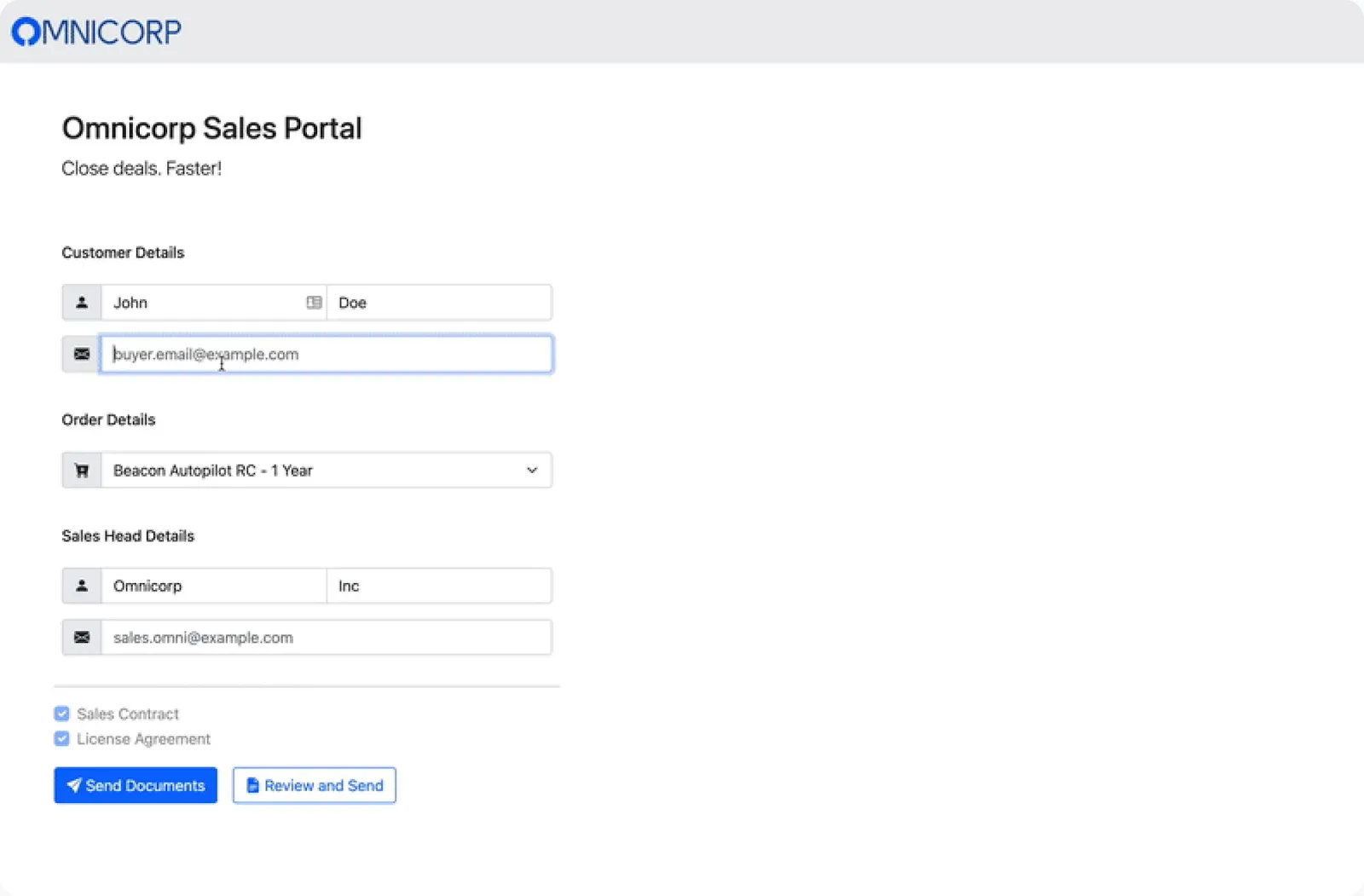
If you currently rely on Docusign's eSign API for custom integrations, you’ll find Signeasy’s API delivers similar functionality with a lighter setup and faster deployment.
Suggest Read: Signeasy vs Docusign
To make the switch as simple as possible, start with this short preparation checklist.
Quick-start checklist (before you start)
Before beginning your Docusign template migration, make sure the following steps are complete. Preparing in advance helps prevent errors and leads to a smooth transition.
After completing these steps, you can start migrating your Docusign templates with confidence.
Step-by-step guide to migrating Docusign templates into Signeasy
Follow these steps to move your Docusign templates into Signeasy without rebuilding them from scratch. The Signeasy customer success team guides the process to keep your templates ready and accurate to use.
Step 1. Export from Docusign
Start by exporting your existing Docusign templates in ZIP format.
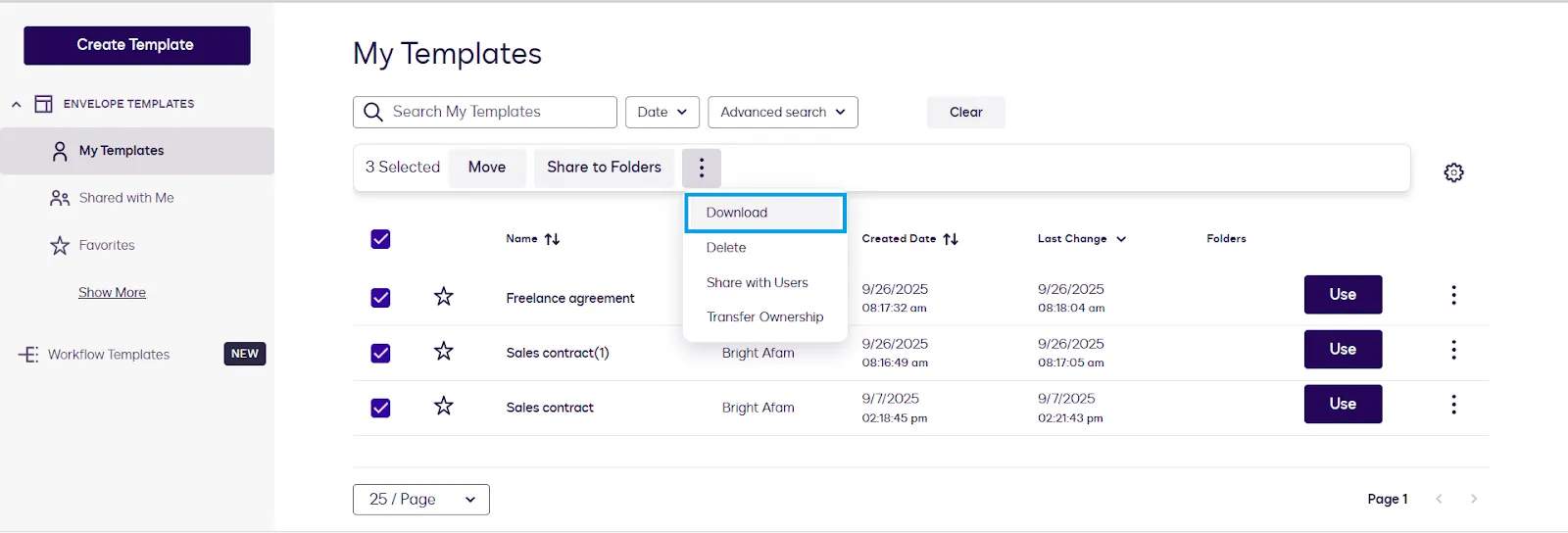
Once downloaded, share the files securely with the Signeasy customer success team. They will process the files and prepare them for import into your account.
Step 2. Import into Signeasy
The Signeasy team uploads the exported files directly into your Signeasy account.
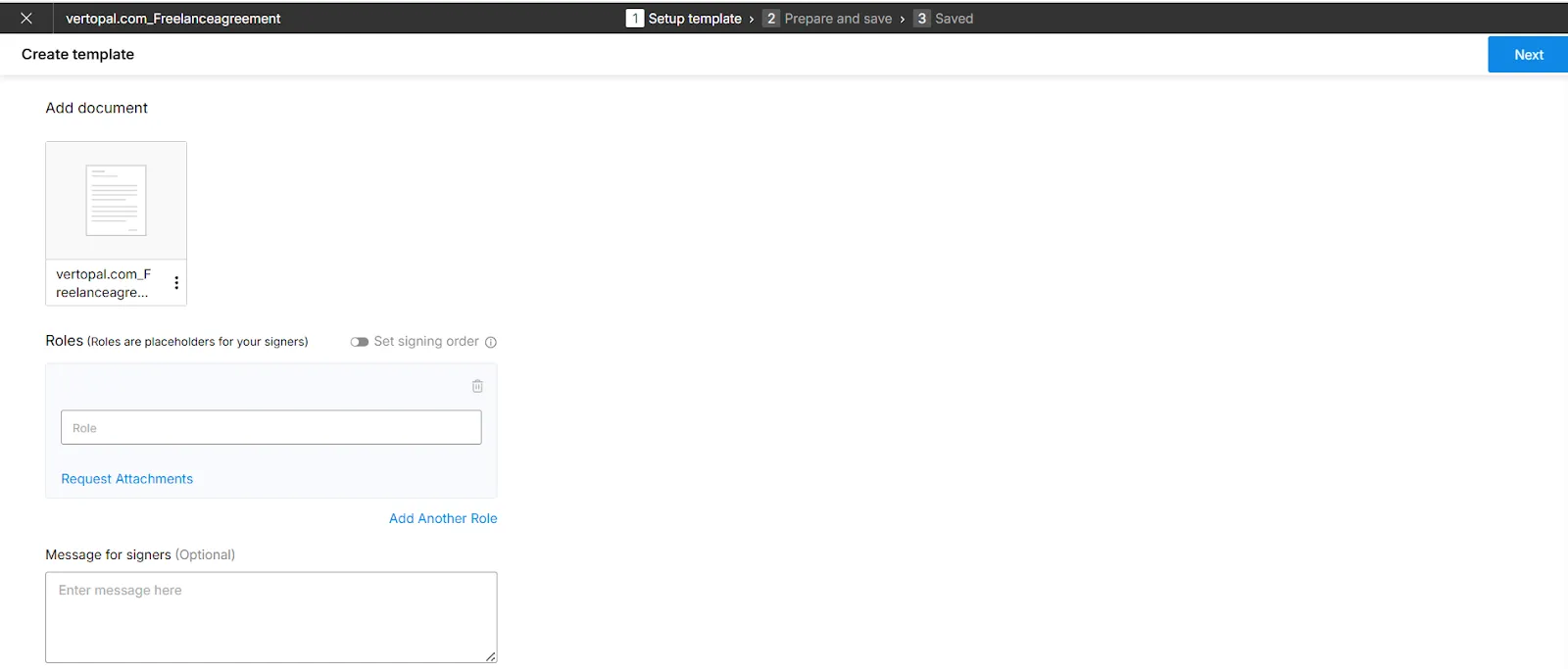
Most standard Docusign fields — such as signer roles, text fields, checkboxes, and dates — migrate successfully. In most cases, your existing workflow structure remains the same, reducing the need for manual setup after import.
Step 3. Handle unsupported fields
A few Docusign features are not currently supported in Signeasy. These include:
- Payments
- Conditional logic
- Combo boxes
If your templates contain these elements, they won’t migrate automatically. The Signeasy team will flag them for you and recommend manual adjustments where needed.
Step 4. Review and verify templates
Once the import is complete, your templates appear in your Signeasy account. Review each template once to confirm:
- All fields are visible and positioned correctly
- Field sizes and signer roles are accurate
As the Signeasy team performs an internal quality check before hand-off, most templates are ready to use immediately.
Suggested Read: Your complete guide to eSign API integration for business
Common issues when migrating and how to solve them
Migrating from Docusign to Signeasy is a fairly flawless process. Nevertheless, it is best to be prepared for some challenges that may come up:
1. Role mismatch
Issue: A signer receives the wrong field or can’t access the document.
Fix: Standardize recipient role names across all templates. Double-check signing order and confirm each role is mapped correctly before testing.
2. Signature appearance
Issue: Signatures appear stretched or cropped on certain devices.
Fix: Adjust signature block size to fit common screen widths. Re-test on mobile to confirm proper scaling.
3. Quick checklist for debugging
Follow this short cycle to identify and resolve most migration issues:
Supported fields and features during DocuSign to Signeasy migration
Running this quick test on a few templates helps you detect and fix most issues before full rollout.
How Signeasy improves the eSignature experience after migration
Once your Docusign templates are live in Signeasy, your team gains a faster, more flexible way to manage document workflows.
1. UX and workflow improvements
With Signeasy, the signing experience is quick and frictionless. Templates load instantly, fields stay consistent across devices, and signers can complete documents easily from any phone, tablet, or computer.
Teams save time with fewer steps between send and sign.
2. Integrations and automation
Signeasy connects with everyday tools like Google Drive, SharePoint, and HubSpot, keeping documents within your existing workflows.
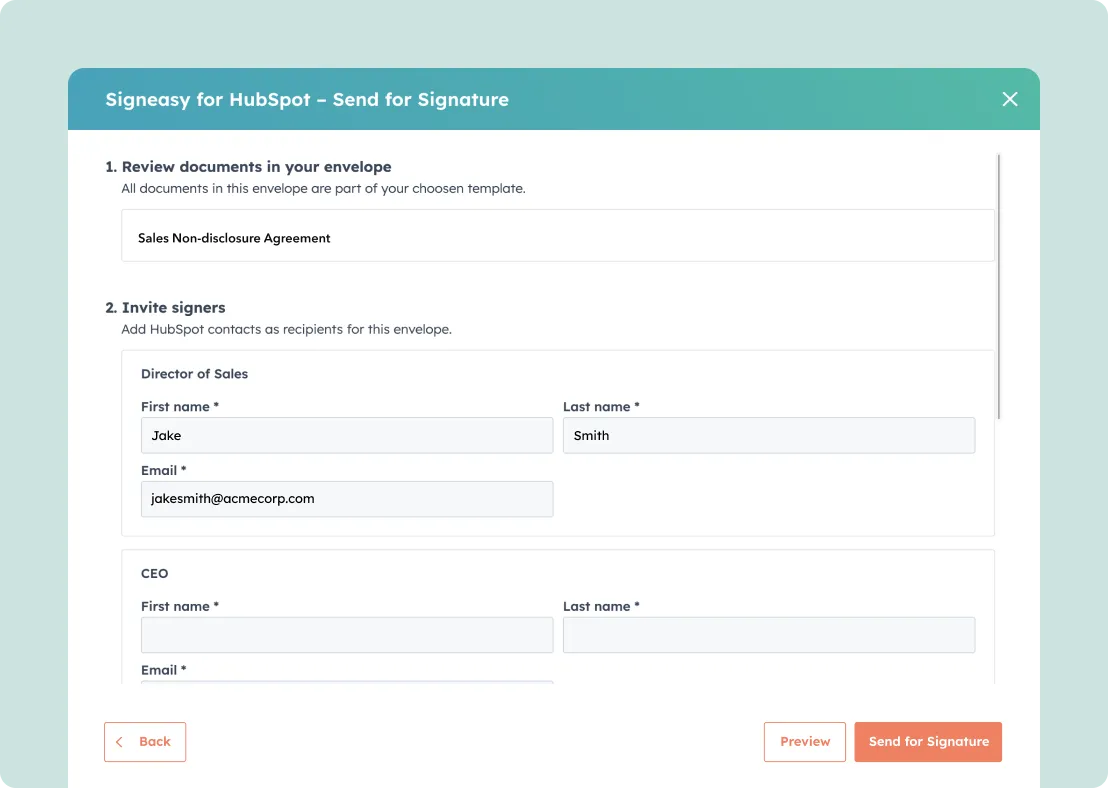
You can trigger signing from stored files, sync completed agreements automatically, and eliminate repetitive uploads.
Checkout Signeasy Integrations
3. Team and admin features
Admins can assign team roles, manage access with role-based permissions, and track activity with usage reports and analytics. These tools keep document management organized and scalable as your team grows.
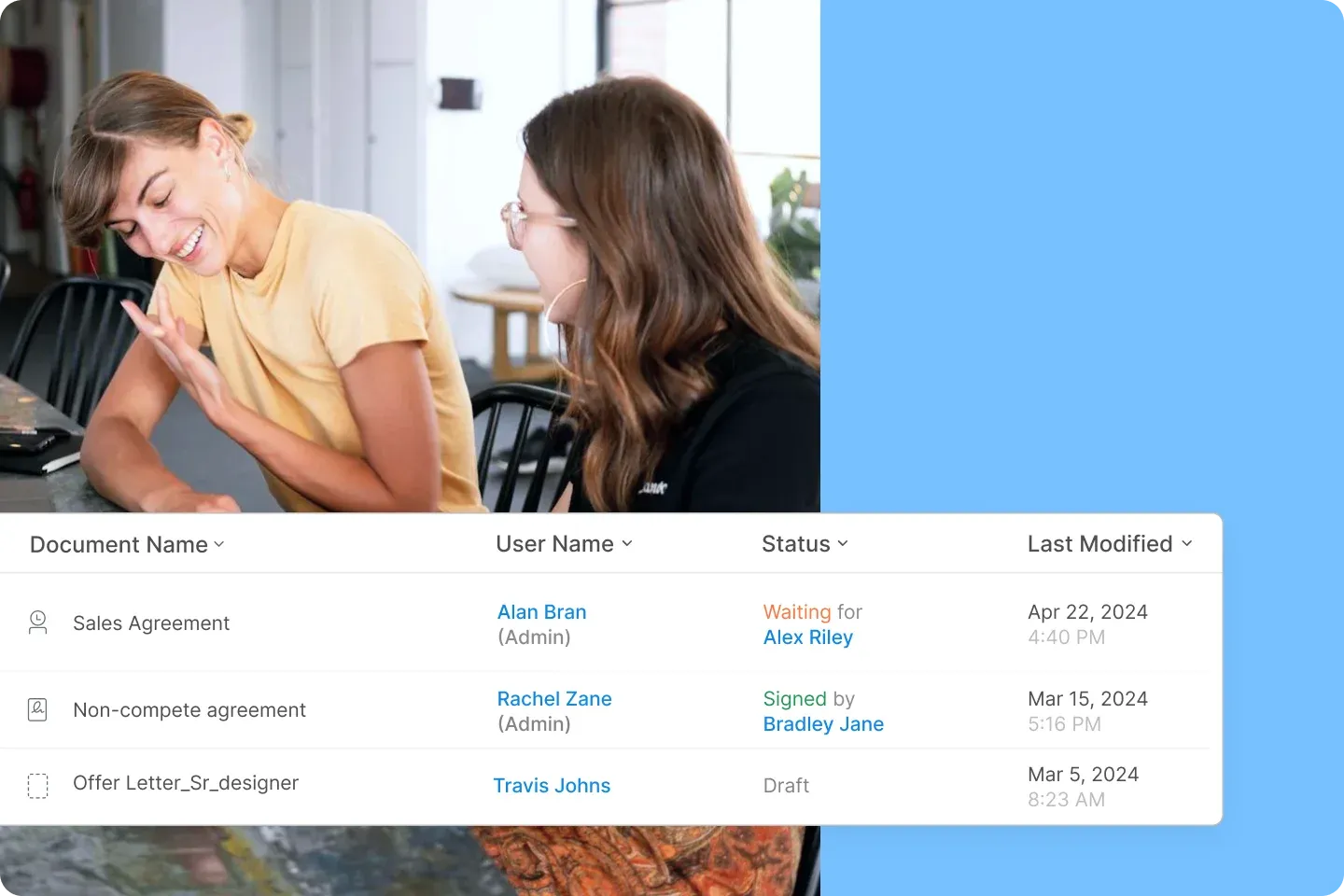
Before you commit, here's the reality check on timing and investment.
Cost, timing, and project sizing
Migration is managed manually by the Signeasy customer success team. The total time depends on two key factors:
- Number of templates being migrated
- Complexity of fields and roles in each template
Smaller template sets are usually migrated quickly, while larger libraries with advanced configurations may take longer. Your customer success manager will review your setup and share an estimated timeline before the process begins.
So there you have it — everything you need to make an informed decision.
Final thoughts on Docusign migration to Signeasy
Migrating Docusign templates to Signeasy lets you keep your existing workflows while gaining a simpler interface, mobile access, and lower overhead. The process is designed to get your team back to work quickly.
Thinking about moving away from Docusign?
Get in touch with our team — we’ll help you migrate your templates and workflows to Signeasy seamlessly. Contact us to get started.



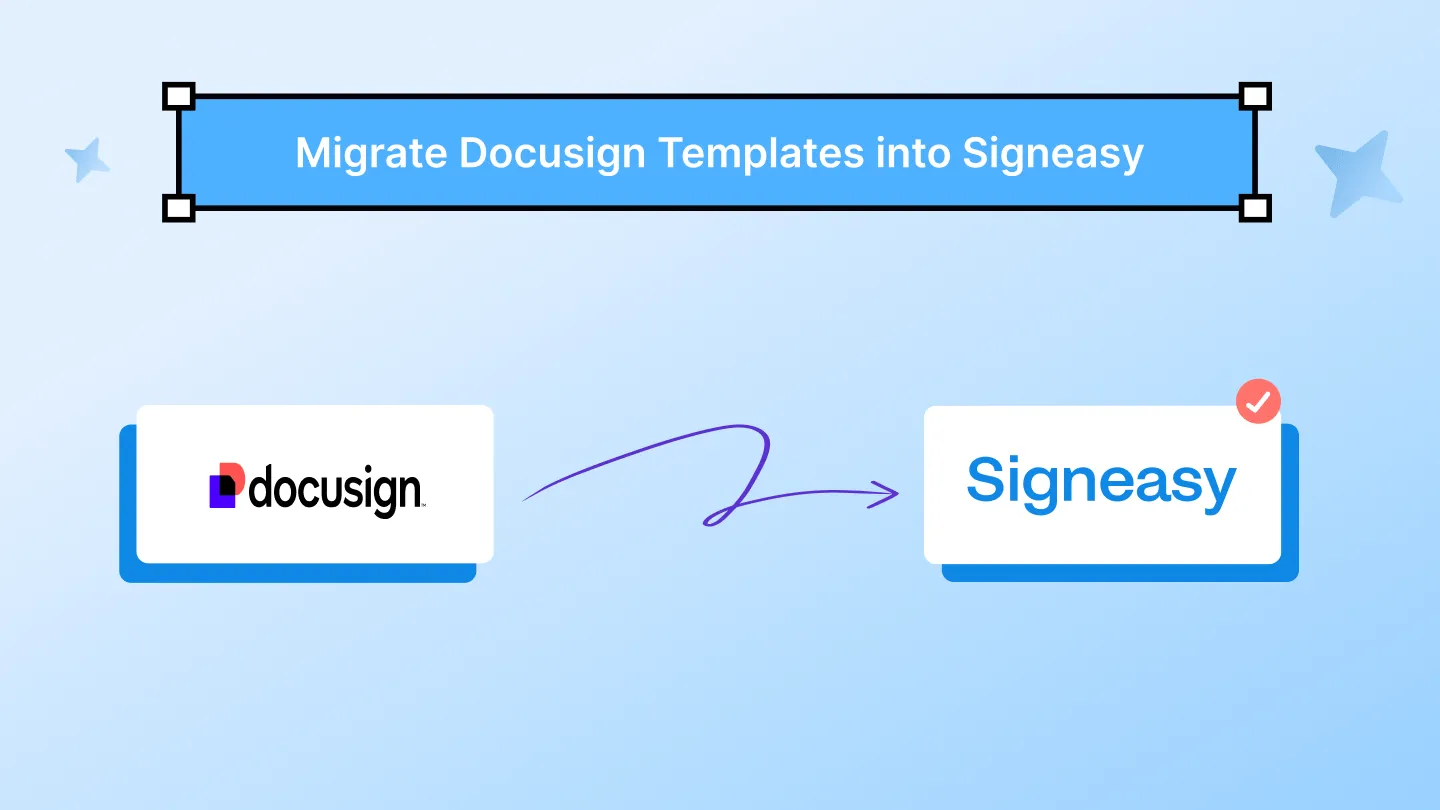






-min.png)
